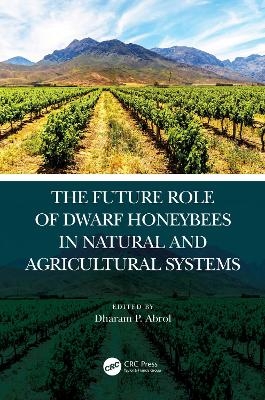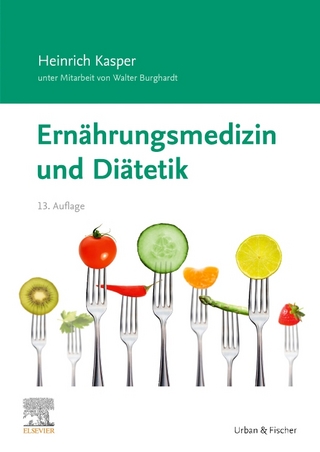
The Future Role of Dwarf Honey Bees in Natural and Agricultural Systems
CRC Press (Verlag)
978-1-138-33582-0 (ISBN)
The future role of dwarf honeybees in natural and agricultural systems provides multidisciplinary perspective about the different facets of dwarf honeybees. The role of dwarf honeybee Apis florea assumes utmost importance in the context of pollinator decline throughout the world threatening stability of ecosystems and global food security. Apis florea is a low land species of south Asia extending more to the west than other Asiatic Apis species. It is an important pollinator of crops in hot and dry agricultural plains. The book is first of its kind which deals in details on varied aspects of Apis florea biology, management, conservation strategies for protecting biodiversity and enhancing crop productivity. The book aims to promote a large, diverse, sustainable, and dependable bee pollinator workforce that can meet the challenge for optimizing food production well into the 21st century.
Features:
Apis florea provides source of livelihood in mountainous areas and marginal farmers.
This book will for the first time present the beekeeping from the perspective of agricultural production and biodiversity conservation
An excellent source of advanced study material for academics, researchers and students and programme planners
Excellent pollinator of tropical and subtropical crops fruits vegetables etc less prone to diseases and enemies
Covering the latest information on various aspects of Apis florea biology, this book brings the latest advances together in a single volume for researchers and advanced level students
This book will be useful to pollination biologists, honeybee biologists in entomology departments, students, teachers, scientists of agriculture, animal behaviour, botany, conservation, biology, ecology, entomology, environmental biology, forestry, genetics, plant breeding, horticulture, toxicology, zoology, seed growers and seed agencies and shall serve as reference book for students, teachers, researchers, extension functionaries and policy planners.
Dr D. P. Abrol, Dean, Faculty of Agriculture, Sher-e-Kashmir University of Agricultural Sciences, has served university in various capacities. He has served as Head of the Division of Entomology from August 2008 to February 2015 and Controller of Examinations during 2012. He has specialized in pest management, honeybee management and pollination biology. He has authored 18 books, 12 manuals and published over 250 original research papers in various national and international journals. He has completed several externally funded collaborative research projects with international organizations in Poland and Switzerland. Prof Abrol has visited South Korea, Malaysia, Saudi Arabia and several other countries as a special invitee to these countries. In addition, he has received letters of appreciation from different organizations. Prof Abrol is a Fellow of the National Academy of Agricultural Sciences, India, and a Fellow of the Royal Entomological Society London, UK. He is a recipient of the Young Scientist Award (1992) — conferred by the Jammu and Kashmir State Council for Science and Technology — a prestigious state award for his outstanding contributions in the field of agricultural sciences. He is also the recipient of Pran Vohra Award — 1993 — a prestigious Young Scientist Award conferred by the Indian Science Congress Association, Calcutta, for his outstanding and innovative research in the field of agricultural sciences. He was also conferred the Prof T. N. Ananthakrishnan Award 1997–1998 — a prestigious national award for his outstanding contributions in the field of entomology by the T. N. Ananthakrishnan Foundation, G.S. Gill Research Institute, Chennai. Prof Abrol won the Dr Rajendra Prasad Puruskar 1999–2000 award — a prestigious national award from the Indian Council of Agricultural Research, New Delhi, for his Hindi book on beekeeping entitled ‘Madhmakhi Palan-Sidhant Evam Vidhian’. He received the 11th Apicultural Association Award (2010) for outstanding contributions in apiculture. King Saud University conferred on him a gold medal for development of apiculture in Asia.
Contents
Foreword .................................................................................................................................................. vii
Preface ...................................................................................................................................................... ix
Editor ........................................................................................................................................................ xi
Contributors ............................................................................................................................................xiii
1. Introduction ...................................................................................................................................... 1
D. P. Abrol
2. Biology of Dwarf Honeybee, Apis florea Fabricius (Hymenoptera: Apidae) ............................ 13
N. Nagaraja
3. Reproductive Biology of Apis florea.............................................................................................. 25
N. Nagaraja and D. P. Abrol
4. The Genetics and Genomics of the Dwarf Honeybee Apis florea Fabricius ............................. 37
S. Mohankumar, T. Sonai Rajan, M. Praghadeesh, P. A. Saravanan and M. R. Srinivasan
5. Foraging in Apis florea ................................................................................................................... 47
D. P. Abrol
6. Diseases and Enemies of Dwarf Honeybees Apis florea and Apis andreniformis .................... 77
D. P. Abrol
7. Nesting Behaviour, Structure and Architecture of Apis florea .................................................. 95
B. V. Shwetha, N. S. Bhat and T. Neethu
8. Utilization of Apis florea in Crop Pollination ............................................................................ 107
B. V. Shwetha, N. S. Bhat and T. Neethu
9. Safety of Dwarf Honeybee, Apis florea in Relation with Agricultural Pest Management .... 125
Chuleui Jung, Muhammad Noor-ul-Ane and Saeed Mohamadzade Namin
10. Nutritional Aspects of the Dwarf Honeybee (Apis florea F.) for Human Consumption ........ 137
Sampat Ghosh, Chuleui Jung, Bajaree Chuttong and Michael Burgett
11. The Antibacterial Activity of Honey with Special Reference to Apis florea ............................147
D. P. Abrol
12. Genetic Diversity of Apis florea in India .....................................................................................163
B. Fakrudin, K. Omkar, Jameel Khan and K. Nandini
13. Morphometric Variation and Floral Resources of the Dwarf Honeybee, Apis florea F.
in Andhra Pradesh and Telangana, India ..................................................................................169
A. J. Solomon Raju
14. Distribution and Diversity of Apis florea in Kerala and Its Role in Agriculture
Production .................................................................................................................................. 185
S. Devanesan
15. Management and Conservation of Apis florea ...........................................................................211
M. R. Srinivasan, P. A. Saravanan and R. Aruna
16. Diversity and Distribution of Dwarf Honeybees in Nepal and Their Role in Natural
and Agricultural Systems ............................................................................................................ 221
Ratna Thapa
17. Potential of Apis florea as a Relevant Insect for Providing Pollination and Ecological
Services in Thailand ..................................................................................................................... 229
Preecha Rod-im and Orawan Duangphakdee
18. The Dance Language of Apis florea ............................................................................................ 243
Orawan Duangphakdee, Preecha Rod-im and Christian Pirk
19. Diversity and Distribution of Dwarf Honeybees in Iran and Their Role
in Natural and Agricultural Systems ......................................................................................... 259
Ayça Özkan Koca and İrfan Kandemir
20. Apis florea Invasion in Sudan: Present Status and Future Implication ................................. 273
Mohammed M. Ibrahim
21. Distribution, Nesting Trees and Genetic Diversity of Apis andreniformis
in West Sumatra......................................................................................................................... 279
Rika Raffiudin, Siti Salmah and Jasmi Jambak
22. Distribution, Nesting Biology and Floral Resources of Red Dwarf Honeybee
(Apis florea Fabricius) in Nagaland, India ................................................................................. 295
Avinash Chauhan and H. K. Singh
23. Distribution, Nesting Biology and Floral Resources of Red Dwarf Honey Bee
(Apis florea Fabricius) in West Bengal, India ............................................................................ 301
Ujjwal Layek and Prakash Karmakar
Index .......................................................................................................................................................311
| Erscheinungsdatum | 10.07.2020 |
|---|---|
| Zusatzinfo | 35 Tables, black and white; 10 Illustrations, color; 81 Illustrations, black and white |
| Verlagsort | London |
| Sprache | englisch |
| Maße | 178 x 254 mm |
| Gewicht | 997 g |
| Themenwelt | Medizin / Pharmazie ► Gesundheitsfachberufe ► Diätassistenz / Ernährungsberatung |
| Naturwissenschaften ► Biologie ► Zoologie | |
| Technik ► Umwelttechnik / Biotechnologie | |
| Weitere Fachgebiete ► Land- / Forstwirtschaft / Fischerei | |
| ISBN-10 | 1-138-33582-7 / 1138335827 |
| ISBN-13 | 978-1-138-33582-0 / 9781138335820 |
| Zustand | Neuware |
| Haben Sie eine Frage zum Produkt? |
aus dem Bereich


